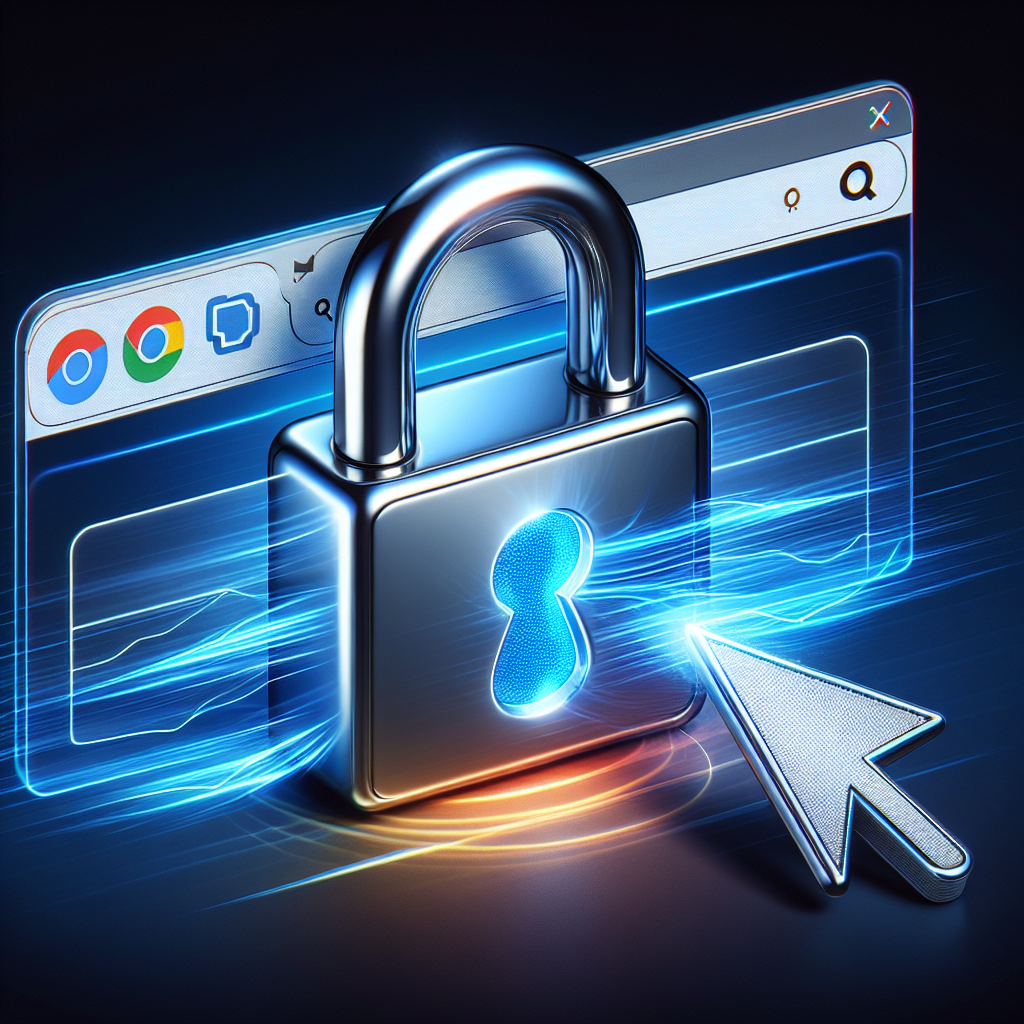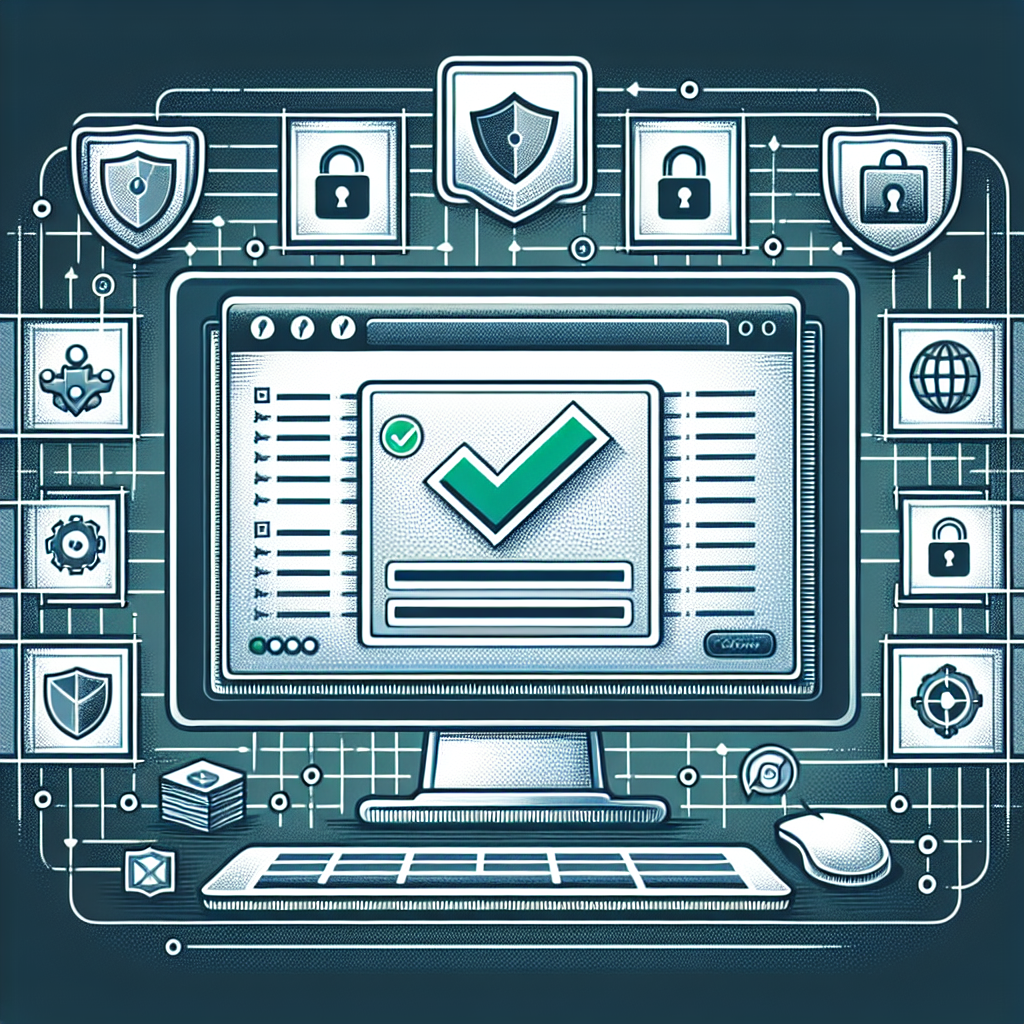Imagine a world where browsing the internet came with no risks. No viruses, no hackers, just endless information at your fingertips. While we’re not quite there yet, there are measures in place to protect us. One such measure is the reCAPTCHA system, designed to check your browser for security purposes. By allowing this quick security check, you not only help protect your own data, but also contribute to a safer online experience for everyone. So, the next time you see that “Checking your browser before accessing…” message, rest assured that it’s just another step towards a more secure web.

Why is it important to check your browser for security purposes?
Protect your personal information
Checking your browser for security purposes is crucial in order to protect your personal information. Your browser is the gateway to the internet, and it is where you input sensitive data such as your login credentials, credit card information, and personal details. By ensuring that your browser is secure, you can prevent unauthorized access and safeguard your personal information from falling into the wrong hands.
Prevent malware and viruses
Another important reason to check your browser for security purposes is to prevent malware and viruses from infecting your device. Malicious actors often target browsers as a means to infiltrate your system and gain access to your personal data. By regularly checking your browser for any vulnerabilities and securing it with the necessary updates and patches, you can significantly reduce the risk of encountering malware and viruses that can compromise your device’s security.
Avoid phishing scams
Phishing scams have become increasingly sophisticated, making it crucial to check your browser for security purposes as a means to avoid falling victim to such scams. Phishing scams typically involve fraudulent emails, websites, or messages that aim to trick individuals into sharing sensitive information or clicking on malicious links. By ensuring your browser is up-to-date and implementing additional security measures, you can reduce the risk of becoming a victim of phishing scams and protect your personal information.
Ensure secure online transactions
If you regularly engage in online transactions, it is vital to check your browser for security purposes to ensure the safety of your financial information. A secure browser with up-to-date encryption protocols provides the necessary protection when inputting credit card details or engaging in online banking. By verifying your browser’s security settings and keeping it updated, you can minimize the chances of sensitive financial data being intercepted or compromised during online transactions.
Common security vulnerabilities in browsers
Outdated browser versions
Outdated browser versions are one of the most common security vulnerabilities that hackers exploit. When a browser falls behind in terms of updates and security patches, it becomes more susceptible to cyber threats. Developers regularly release updates to address security vulnerabilities and improve browser performance. By neglecting to update your browser to the latest version, you leave yourself at risk of potential attacks and compromise the overall security of your system.
Insecure browser plugins and extensions
While browser plugins and extensions can enhance your browsing experience, they can also create potential security vulnerabilities. Insecure or outdated plugins and extensions can be exploited by hackers to gain unauthorized access to your system or compromise your personal information. It is crucial to regularly check for updates and remove any unnecessary or suspicious plugins and extensions to ensure the security of your browser.
Weak or reused passwords
Using weak or reused passwords is a common security vulnerability that can put your browser and personal information at risk. Weak passwords can be easily guessed or cracked by cybercriminals, while reused passwords can lead to multiple accounts being compromised if one is compromised. It is essential to use strong and unique passwords for each online account and employ a reputable password manager to securely store and manage your passwords.
Unsecured Wi-Fi connections
Unsecured Wi-Fi connections pose a significant security risk to your browsing activities. Public Wi-Fi networks, such as those in coffee shops or airports, are often unsecured and can be easily exploited by hackers. When connected to an unsecured Wi-Fi network, your browsing activities, including your passwords and personal information, can be intercepted. It is important to connect to secure Wi-Fi networks whenever possible and utilize a virtual private network (VPN) for added security when using public networks.

Checking for browser updates
Importance of keeping your browser up to date
Keeping your browser up to date is of utmost importance when it comes to maintaining browser security. Browser developers continuously release updates and patches to address security vulnerabilities and improve overall performance. By regularly checking for updates, you ensure that your browser incorporates the latest security features and fixes any known vulnerabilities, reducing the risk of cyberattacks and ensuring a safe browsing experience.
How to check for updates
Checking for browser updates is a simple process that varies slightly depending on the browser you are using. In most browsers, you can check for updates by accessing the “Settings” or “Preferences” menu. Look for an option that indicates updates or security, and follow the prompts to check for the latest version. The browser will then automatically search for any available updates and provide you with the necessary instructions to update your browser.
Enabling automatic updates
To ensure that your browser remains up to date without requiring manual checks, you can enable automatic updates. Automatic updates streamline the process of keeping your browser secure by automatically installing the latest updates and security patches as they become available. To enable automatic updates, access the settings or preferences menu in your browser and locate the option for automatic updates. Enable this option to ensure that your browser always has the latest security features.
Verifying browser security settings
Reviewing privacy and security preferences
Reviewing your browser’s privacy and security preferences is essential to maintain a secure browsing experience. Each browser has its own set of privacy and security settings that you can customize to enhance your protection. For example, you can adjust settings related to cookies, pop-ups, and website permissions. By reviewing and adjusting these settings to align with your security preferences, you can enhance your browser’s ability to protect your personal information and prevent potential security breaches.
Ensuring HTTPS encryption
When accessing websites, it is important to ensure that you are using the secure HTTPS protocol rather than the unencrypted HTTP protocol. HTTPS encrypts the data exchanged between your browser and the website, making it more difficult for hackers to intercept or tamper with the information. You can verify if a website is using HTTPS encryption by checking for a padlock symbol in the browser’s address bar. Additionally, consider using browser extensions that force HTTPS connections for added security.
Disabling or removing unnecessary plugins
Unnecessary browser plugins can introduce security vulnerabilities and impact your browsing experience. Plugins often have access to various aspects of your browser and can be exploited by attackers. It is important to review the plugins installed in your browser and disable or remove any that are unnecessary or not regularly used. By doing so, you reduce the potential attack surface and enhance the overall security of your browser.
Enabling popup blockers
Pop-up windows can be intrusive and potentially carry malicious content. To prevent pop-ups from compromising your browser’s security, it is recommended to enable popup blockers. Most modern browsers have built-in popup blockers that can be easily activated in the browser’s settings. Popup blockers help prevent unwanted windows from opening automatically, reducing the risk of inadvertently clicking on malicious advertisements or being redirected to malicious websites.
Managing cookie settings
Cookies are small text files that websites store on your device to remember certain information about your browsing activities. While cookies serve various purposes, they can also pose privacy and security risks if not properly managed. By reviewing and adjusting your browser’s cookie settings, you can control the type of information websites can store and access on your device. Consider blocking third-party cookies and regularly clearing your browsing history and cookies to maintain a higher level of security and privacy.

Scanning for malware and viruses
Using reputable antivirus software
Using reputable antivirus software is crucial for scanning your browser and protecting your device from malware and viruses. Antivirus software provides real-time protection by continuously scanning your system for potential threats. Ensure that you have a reputable and up-to-date antivirus program installed on your device to detect and remove any malicious software that may attempt to compromise your browser’s security.
Performing regular system scans
In addition to real-time protection, regular system scans with your antivirus software are essential to maintain a secure browsing experience. Schedule periodic scans to check for any malware or viruses that may have bypassed real-time protection. Perform full system scans to thoroughly examine all files, including those related to your browser. Regular system scans help ensure the early detection and removal of any threats that may compromise your browser’s security.
Identifying and removing malicious browser extensions
Malicious browser extensions can compromise your browser’s security by collecting your personal information, altering your browsing experience, or redirecting your web traffic. It is important to regularly review the installed extensions in your browser to identify and remove any that are suspicious or of unknown origin. Consider using trusted sources when downloading browser extensions and read user reviews and ratings to ensure their credibility and security.
Scanning downloads for potential threats
Before opening or executing any downloaded files, it is important to scan them for potential threats. Downloads from untrusted sources or suspicious websites can contain malware or viruses that can compromise your browser’s security. Ensure that your antivirus software is configured to automatically scan downloaded files, or manually initiate scans for any files before opening them. This simple step can help prevent accidental installation of malicious software and protect your browser from potential threats.
Protection against phishing scams
Recognizing phishing emails and websites
Recognizing phishing emails and websites is essential to protect yourself from falling victim to these scams. Phishing emails often impersonate legitimate entities and attempt to trick you into sharing sensitive information or clicking on malicious links. Look for red flags such as spelling and grammar errors, generic greetings, and requests for personal information. Similarly, phishing websites may use deceptive URLs or mimic the appearance of legitimate websites. Pay attention to the URL, ensure it begins with “https,” and be cautious of any unexpected or suspicious requests for personal information.
Verifying website authenticity
Verifying the authenticity of websites is crucial in preventing phishing attacks. Phishing websites often mimic the design and layout of legitimate websites to deceive users. Before entering any personal information or making online transactions, verify the website’s authenticity by checking for security indicators such as the padlock symbol in the browser’s address bar, ensuring the URL matches the legitimate website, and researching the website’s reputation. Taking these steps can help ensure you are interacting with a legitimate and secure website.
Avoiding suspicious links and attachments
Phishing emails often contain suspicious links or attachments that can lead to malware infections or direct you to fraudulent websites. It is important to exercise caution when opening emails from unknown senders or emails that appear suspicious. Avoid clicking on links or downloading attachments from such emails, as they may lead to compromised browser security. If you receive emails from unknown senders or with unexpected attachments, it is always best to err on the side of caution and delete them to mitigate potential risks.
Using phishing protection tools
Many browsers and security software offer phishing protection tools that can help detect and block known phishing websites and emails. These tools utilize databases of known phishing URLs and patterns to identify and warn users about potentially malicious content. Ensure that your browser’s phishing protection feature is activated, and consider using additional security software that offers enhanced phishing protection. These tools provide an added layer of defense to protect your browser and personal information from phishing scams.

Securing Wi-Fi connections
Choosing strong and unique Wi-Fi passwords
Securing your Wi-Fi connection begins with choosing strong and unique passwords for your wireless network. Weak or easily guessable passwords increase the risk of unauthorized access to your network, compromising the security of your browsing activities as well. Use a combination of uppercase and lowercase letters, numbers, and special characters to create a strong password for your Wi-Fi network. Avoid using common phrases or personal information that can be easily guessed.
Enabling network encryption (WPA2)
To secure your Wi-Fi connection effectively, it is crucial to enable network encryption, preferably using the WPA2 protocol. WPA2 (Wi-Fi Protected Access 2) is currently the most secure encryption protocol available for wireless networks. This encryption protocol ensures that data transmitted between your device and the Wi-Fi router is encrypted and protected from interception. Enable WPA2 encryption in your Wi-Fi router’s settings to enhance the security of your wireless network.
Changing default router settings
By default, Wi-Fi routers often come with generic settings that are known to potential attackers. Changing the default settings adds an extra layer of security to your Wi-Fi network. It is essential to change the default router login credentials, as well as the default network name (SSID). By customizing these settings, you make it more difficult for unauthorized individuals to gain access to your network and enhance your browser’s overall security.
Disabling remote management
Remote management allows access to your Wi-Fi router’s settings from a remote location. While this feature can be convenient, it also poses a security risk if accessed by malicious individuals. Disabling remote management ensures that only devices connected to your local network can make changes to your Wi-Fi router’s settings. By disabling this feature, you limit the potential attack surface and reduce the risk of unauthorized access, thereby strengthening your Wi-Fi network’s security.
Implementing additional security measures
Using a virtual private network (VPN)
A virtual private network (VPN) is a powerful tool for enhancing your browser’s security and protecting your online privacy. A VPN encrypts your internet connection, ensuring that your browsing activities are hidden from prying eyes, including your internet service provider (ISP) and potential attackers. By routing your internet traffic through a secure VPN server, you can browse the internet anonymously and securely, even when connected to unsecured Wi-Fi networks.
Enabling two-factor authentication
Enabling two-factor authentication (2FA) adds an additional layer of security to your online accounts, including your browser. 2FA typically requires two forms of authentication, such as a password and a unique verification code sent to your smartphone, before granting access to your account. By enabling 2FA, you significantly reduce the risk of unauthorized access to your browser and personal information, as even if someone manages to obtain your password, they would still need the second form of authentication to gain access.
Using a password manager
Managing multiple complex passwords can be challenging, leading many individuals to reuse weak passwords or write them down, compromising browser security. Using a password manager can alleviate this issue by securely storing and generating strong passwords for your online accounts. Password managers encrypt your passwords and allow you to access them with a master password or other forms of authentication. By utilizing a password manager, you can maintain strong and unique passwords for your browser and other online accounts without the burden of remembering them all.
Regularly backing up your data
Regularly backing up your data is an essential security measure that protects your browser and personal information from data loss. In the event of a security breach or system failure, having a recent backup ensures that you can restore your browser settings, bookmarks, and other important data. Utilize cloud storage solutions, external hard drives, or automatic backup software to create regular backups of your critical data. By regularly backing up your data, you can quickly recover from any security incidents and minimize the impact on your browsing experience.
Educating yourself on browser security best practices
Keeping up with the latest security news
Staying informed about the latest security news is crucial to understanding emerging threats and implementing appropriate security measures for your browser. Follow reputable security blogs, news sources, and cybersecurity organizations to stay updated on the latest security vulnerabilities, attacks, and best practices. By keeping up with the latest security news, you can proactively protect your browser against evolving threats and make informed decisions regarding your online security.
Understanding common attack techniques
Understanding common attack techniques employed by cybercriminals can help you recognize potential threats and take appropriate action to protect your browser. Educate yourself on techniques such as phishing, social engineering, malware distribution, and browser vulnerabilities. By understanding these attack techniques, you can develop a heightened awareness and implement necessary precautions to prevent falling victim to such attacks.
Being cautious with online downloads and installations
Online downloads and installations are common avenues through which malware and viruses can gain access to your browser. Exercise caution when downloading files or installing software from the internet. Only download files from trusted sources and verify the authenticity and security of the software before installation. Be mindful of the permissions requested by applications during installation and avoid downloading software that appears suspicious or originates from unknown sources.
Avoiding suspicious websites and ads
Navigating to suspicious websites or clicking on suspicious ads can expose your browser to numerous security risks. Be cautious when browsing the internet and avoid websites that are known for hosting malicious content or suspicious activities. Look out for warning signs such as excessive pop-ups, unexpected redirects, and unsolicited offers. It is also advisable to use ad-blocking extensions or plugins to minimize the risk of encountering malicious or intrusive advertisements.
Conclusion
Regularly checking your browser for security purposes is vital in today’s digital landscape to protect your personal information, prevent malware and viruses, avoid phishing scams, and ensure secure online transactions. By understanding the common security vulnerabilities in browsers, such as outdated software versions, insecure plugins, weak passwords, and unsecured Wi-Fi connections, you can take proactive steps to safeguard your browsing experience. By implementing measures like keeping your browser up to date, verifying security settings, scanning for malware, protecting against phishing scams, securing Wi-Fi connections, and using additional security measures, you can significantly enhance your browser’s security. Furthermore, educating yourself on best practices, staying updated with the latest security news, and being cautious with online downloads and installations will further fortify your browser’s security. Take control of your browser’s security today to protect your online safety and enjoy a worry-free browsing experience.
